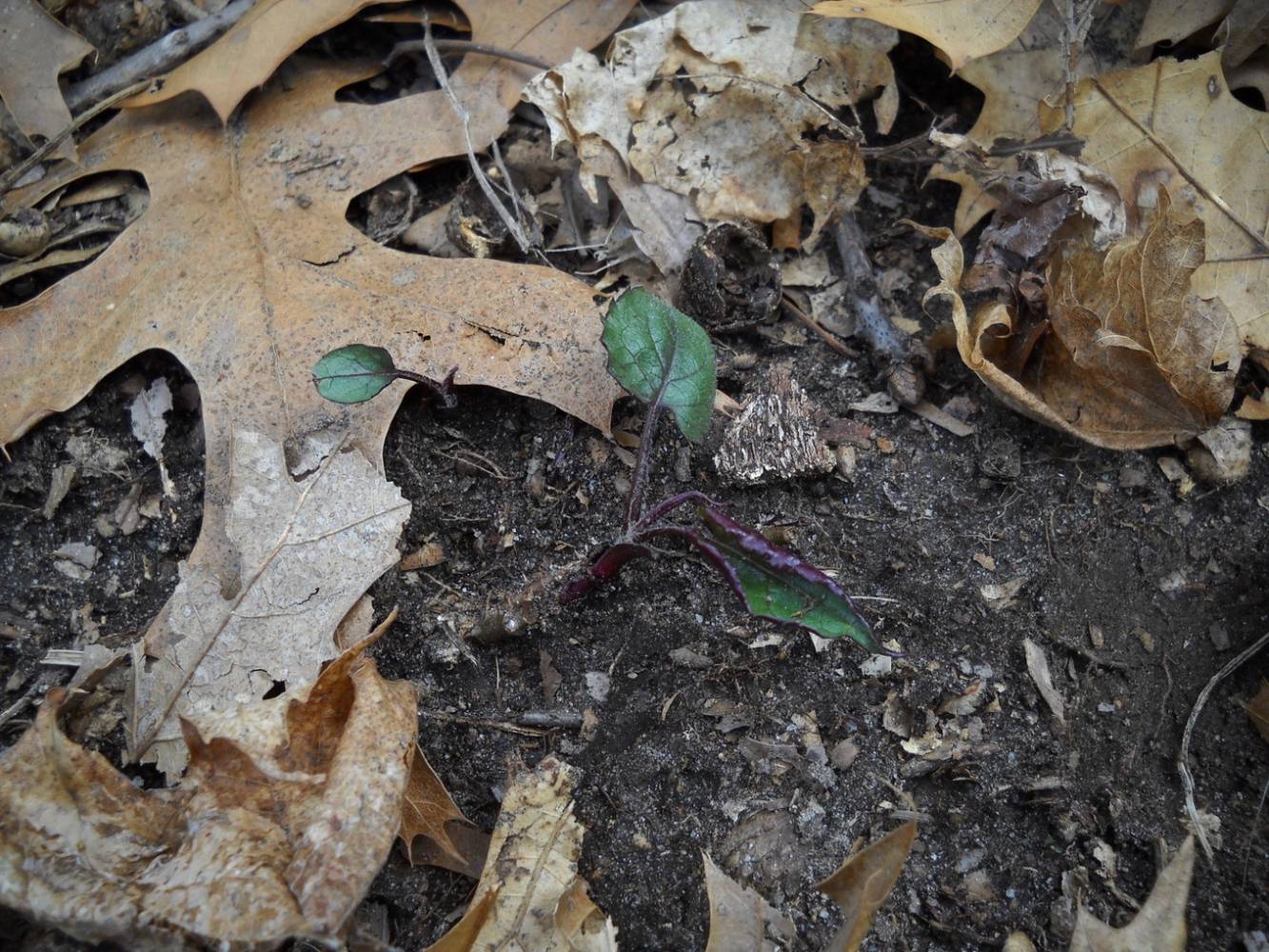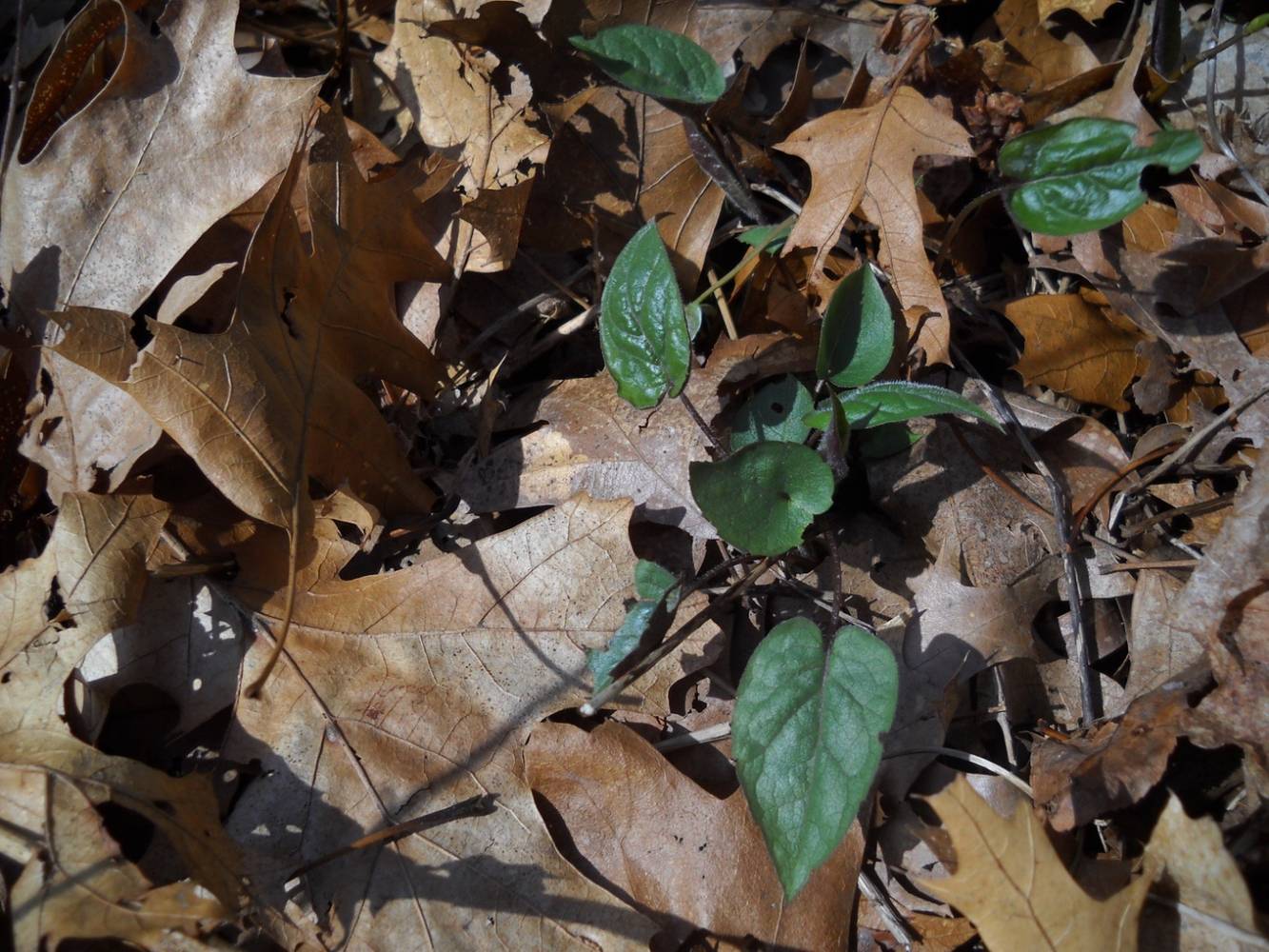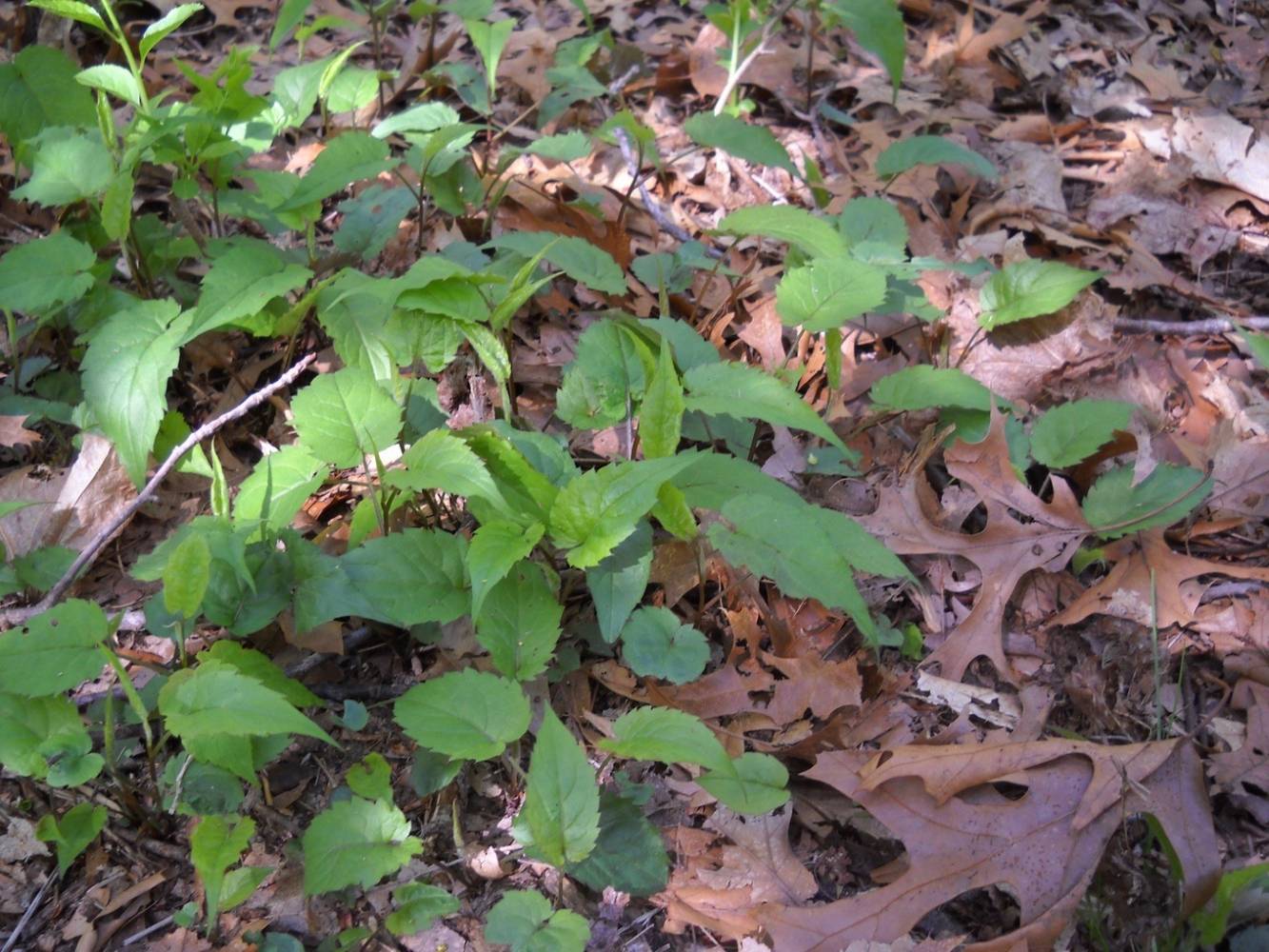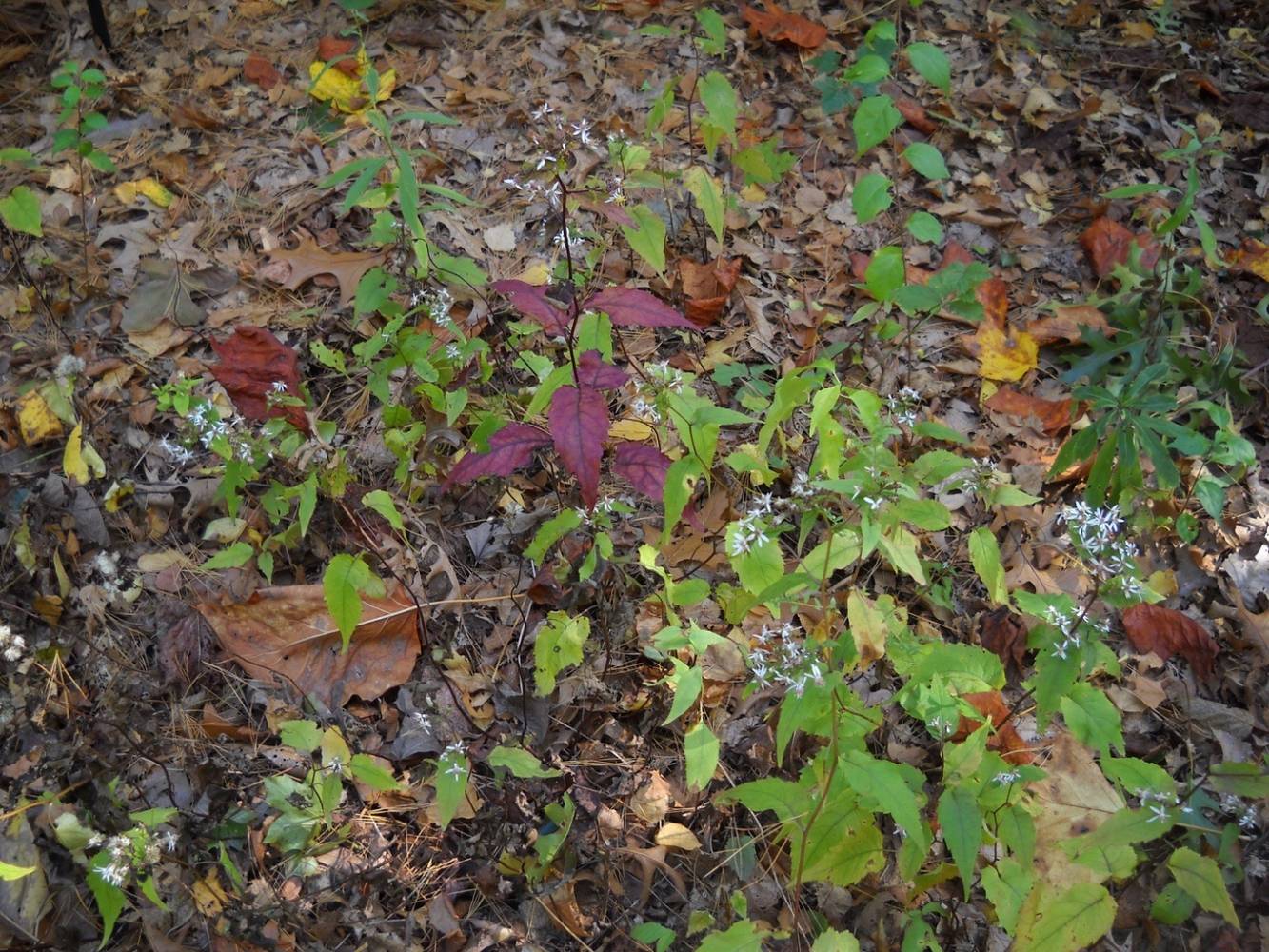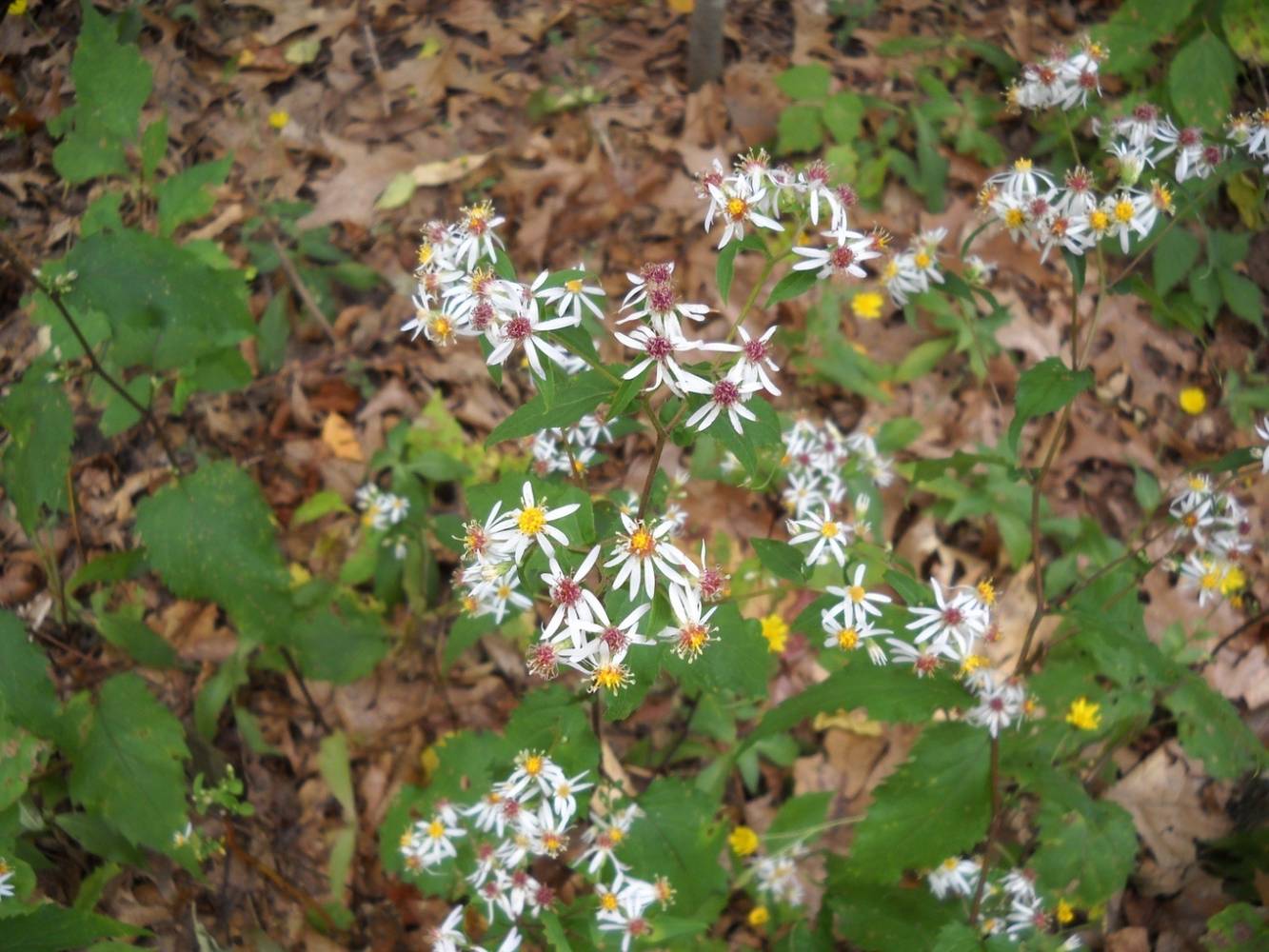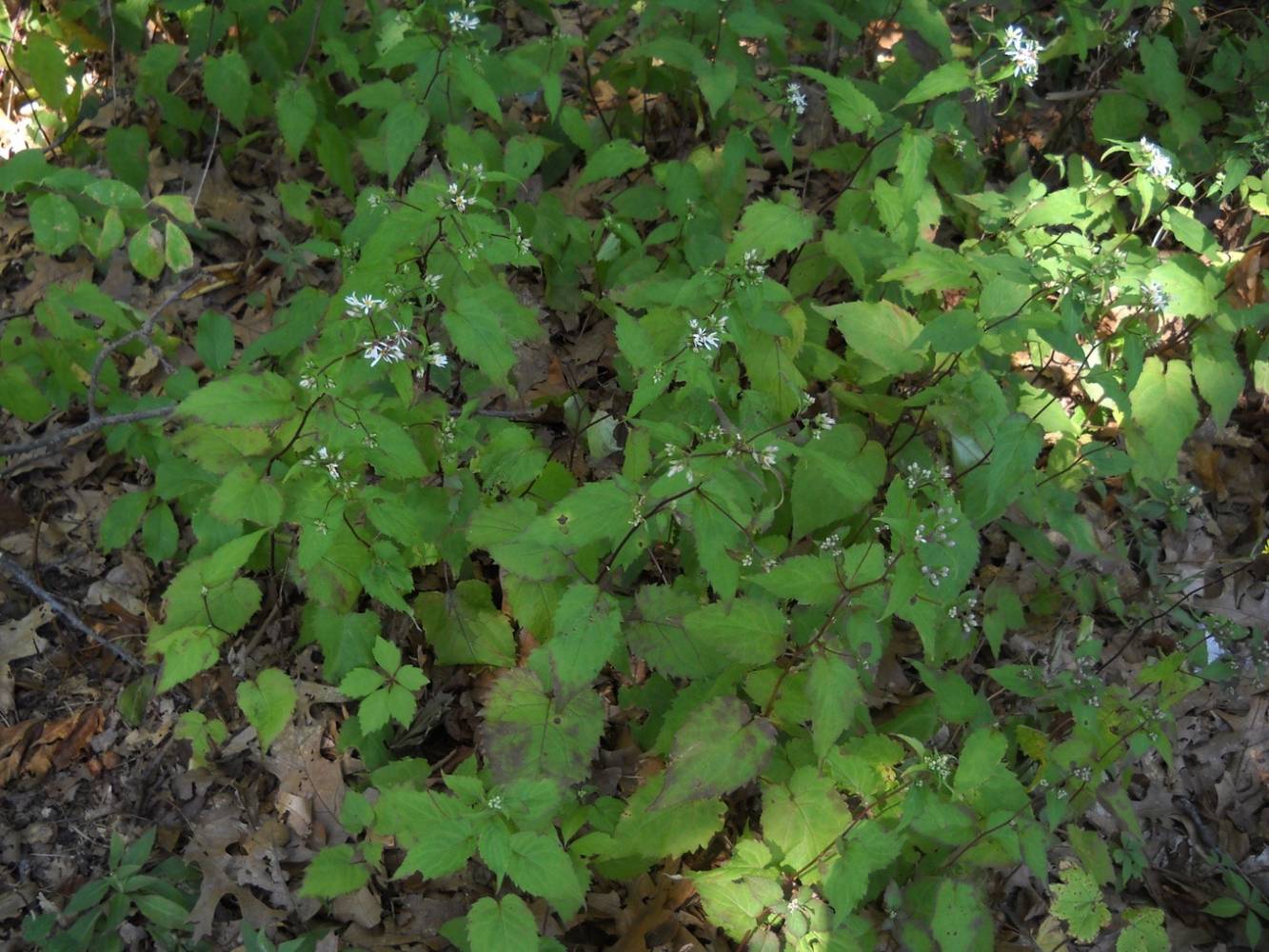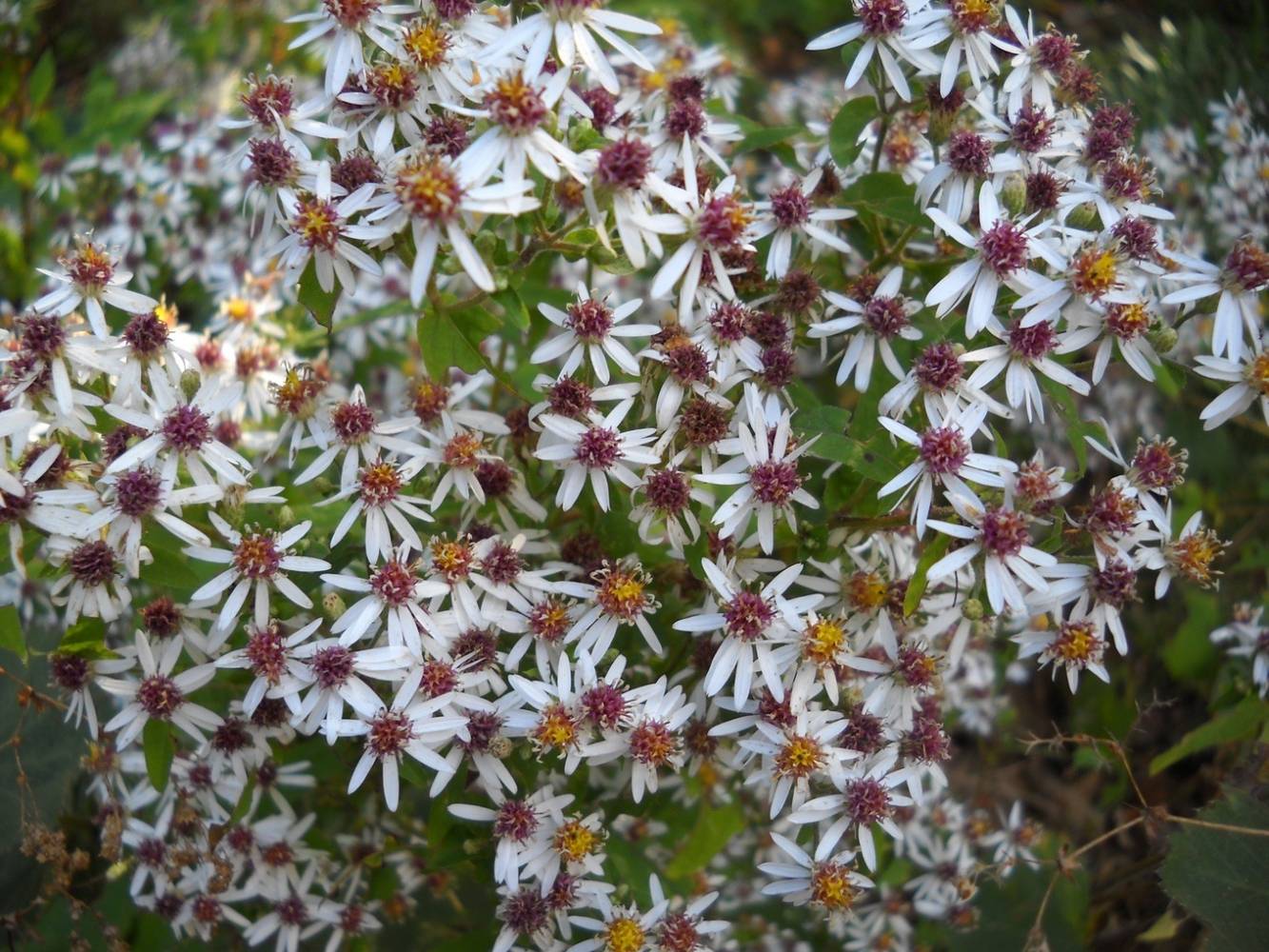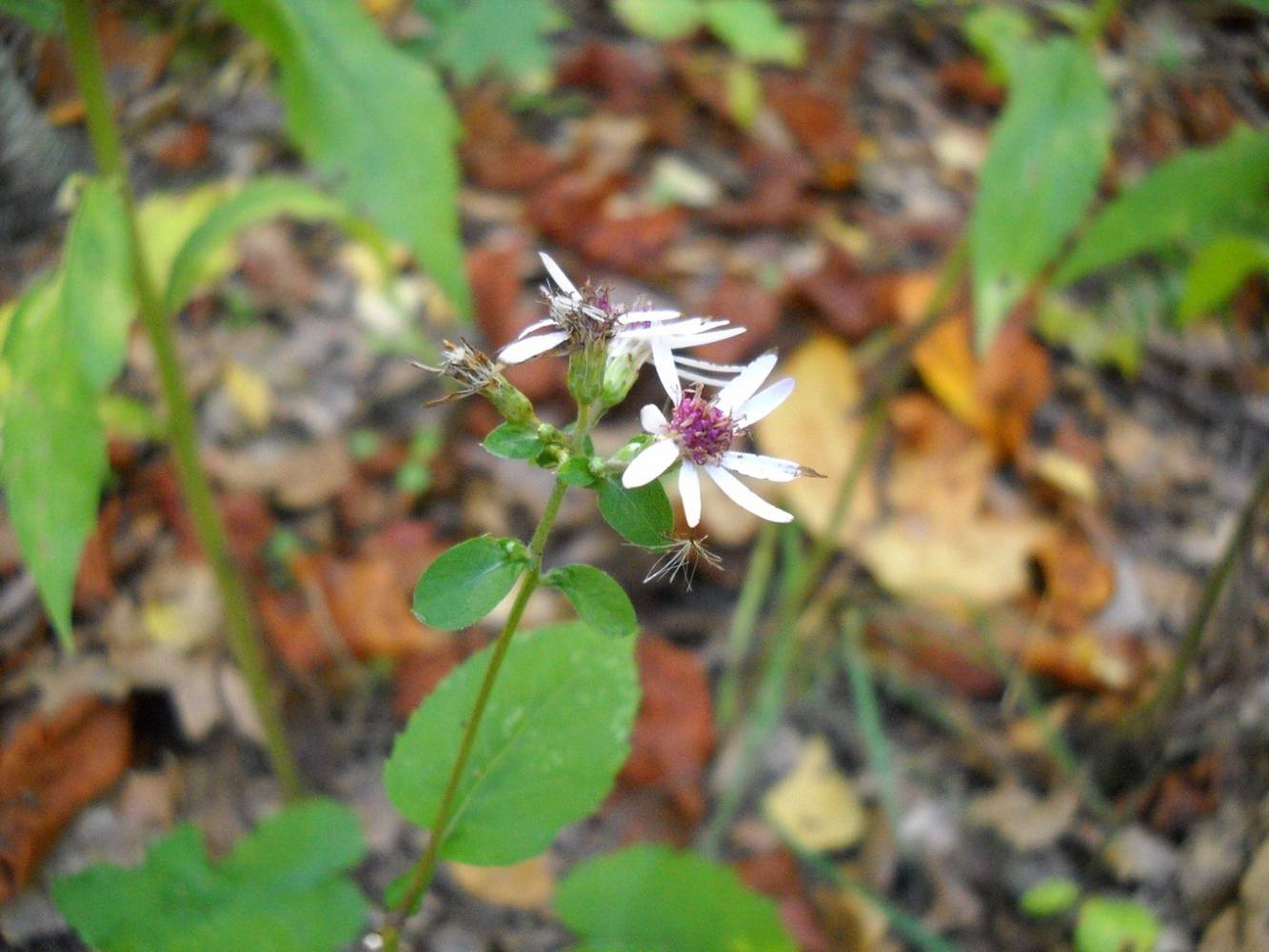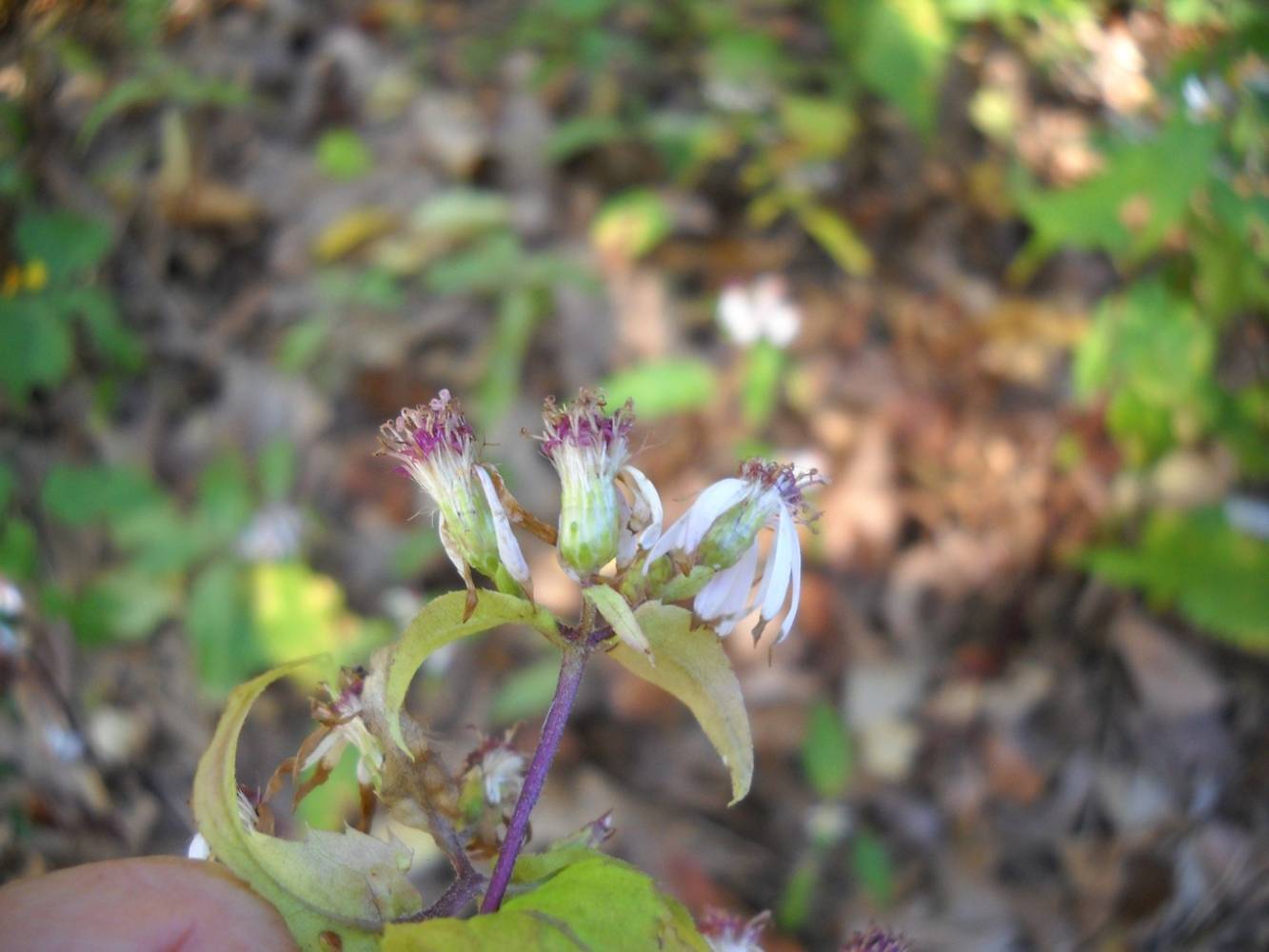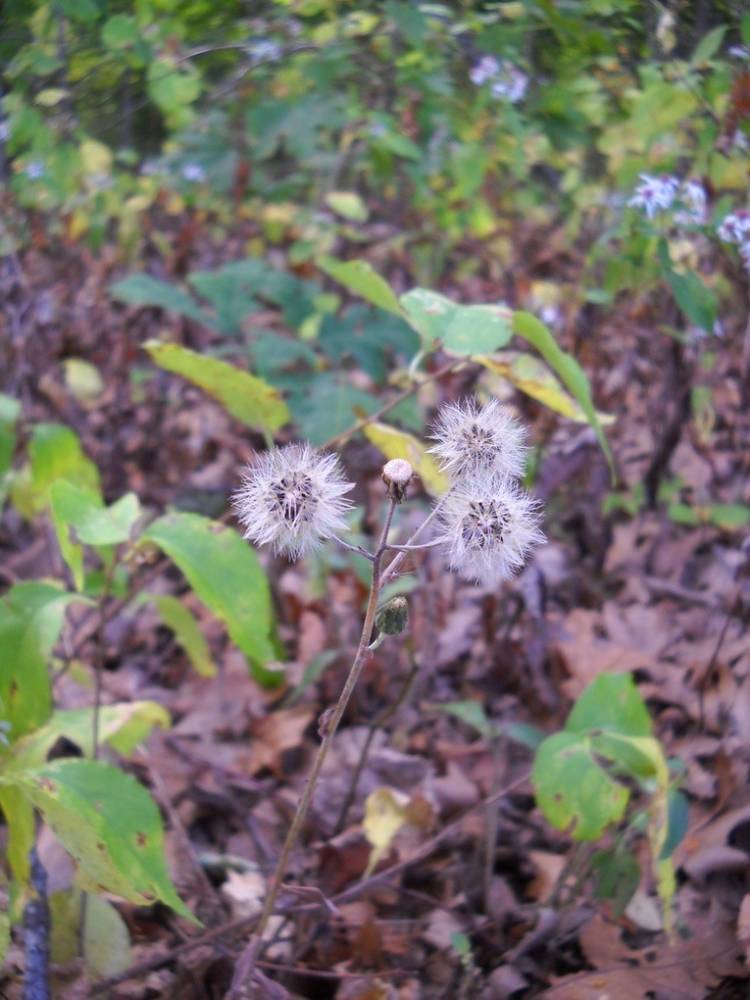white wood-aster
Eurybia divaricata
Asteraceae
The white wood-aster is a perennial forb, native to eastern North America. As its name suggests, it is most often found within or along the edges of woodland at Salter Grove. Its clusters of small but conspicuous white composite flower heads light up the understory from August to October. It occurs as clonal patches since adjacent stems likely grew from underground rhizomes of established individuals.
It flowers in advance of the other aster species and attracts bees and butterflies. Its seeds are eaten by birds and small mammals. Apart from its showy flowers, it has become a popular choice for native wildflower gardens because it is deer, drought and shade tolerant.

